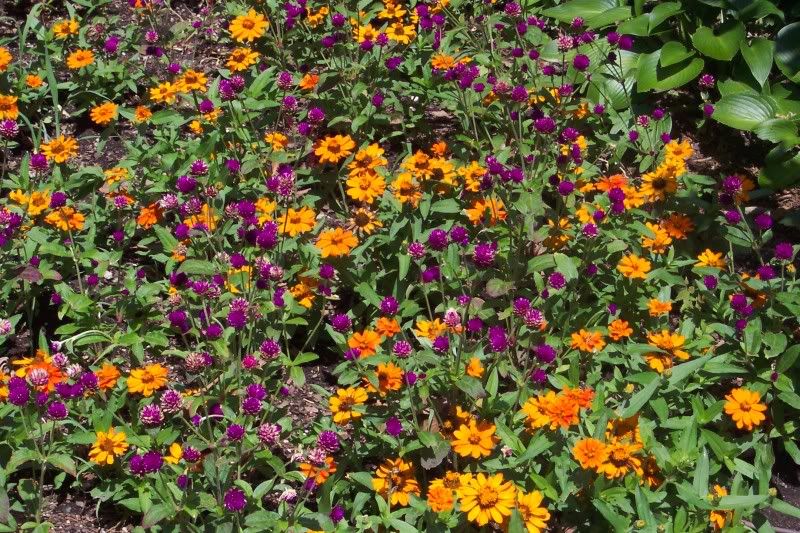A couple of years ago I taught an adult ed. class at Matthaei Botanical Gardens in Ann Arbor. It was about starting seeds at home. Here are the notes I passed out to the class:
SEED STARTING
Before Seeding
-Pick out easiest seeds to gain experience: cabbage family, onion family, lettuce, tomatoes, peppers; alyssum,, castor bean, cosmos, marigolds, zinnias
-Determine when they need to be started: refer to chart
-Does the seed need to have any special treatment before sowing?
-Be sure to have proper growing medium: sterilized, well drained, proper moisture content
-Match seed size to container size
-Determine whether the seeds need to be covered when sowing or other treatment: check seed packet or other growing instructions
Container
-Containers used to start seeds must be clean and sterile
-Potting medium must be sterile
-Don’t over pack the soil mix into the container, a light tap on the table is plenty
-Smooth the planting surface: tamp lightly
Sowing Seed
-Smallest seeds sown of the surface and usually not covered with soil
-Largest seeds covered or pushed into planting mix to the proper depth: about 2-3 times the diameter of the seed
-Cover container with clear plastic to retain moisture: a dome or clear wrap
-Place container on heat mat: 70F is a good average temperature
-Be cautious when placing covered tray in direct sunlight, you may “cook” your seedlings as they emerge
-Water trays or containers if they become dry, use a fine nozzle so the seeds don’t wash away or place in a tray of water and allow water to wick up into soil mix
After Seedlings Are Up
-Move trays into a sunny window, greenhouse or place them under lights; 2 40watt fluorescent fixture 2 inches from the seedlings; if seedlings start to “stretch” there’s not enough light.
-Take trays off of heating mat
- After a few days, fertilize with ½ strength soluble fertilizer every 7-10 days
Transplanting
-Have your new containers ready: clean and sterile
-Use proper planting mix: move up to a coarser mixture if necessary, i.e. Individual pots
-Create a hole in the mix to receive the transplant
-Prick the seedlings out of the sowing medium using a narrow tool
-Lift and handle seedlings by their leaves and roots
-Place seedlings into the new soil mix, try to keep the roots from curving upward
-Gently tuck the soil around them
-Water in gently
-Most seedling will not need plastic covering at this stage
After Transplanting
-Continue water and fertilizer schedule
-Raise grow lights as needed
-Separate plants if they begin to get crowded
-Stimulate the plants by rubbing them with your hand to strengthen them, or use a fan
-As planting time nears, begin to harden off your plants: expose them to outdoor condition very gradually over a period of a week
-Plants can be left out overnight after one week and be transplanted into the garden if the weather permits
Common Seeding Problems
-Poor germination
: sown at wrong depth, poor drainage, improper temperature, light requirements, drying out, pre-treatment of seeds
-Seedlings die or fail to grow: lack of water, damping off, lack of light
BIBLIOGRAPHY
Jeavons, John How to Grow More Vegetables
Bubel, Nancy The New Seed Starter’s Handbook
Ashworth, Suzanne Seed to Seed
Bradley, F.M. et al ed. Rodale’s Ultimate Encyclopedia of Organic Gardening
Newcomb, Duane The Backyard Vegetable Factory
Bartholomew, Mel Square Foot Gardening
Madigan, Carleen ed. The Backyard Homestead
Poincelot, Raymond No Dig, No Weed Gardening
I hope these notes help you get your seeds off to a good start.
Bob





